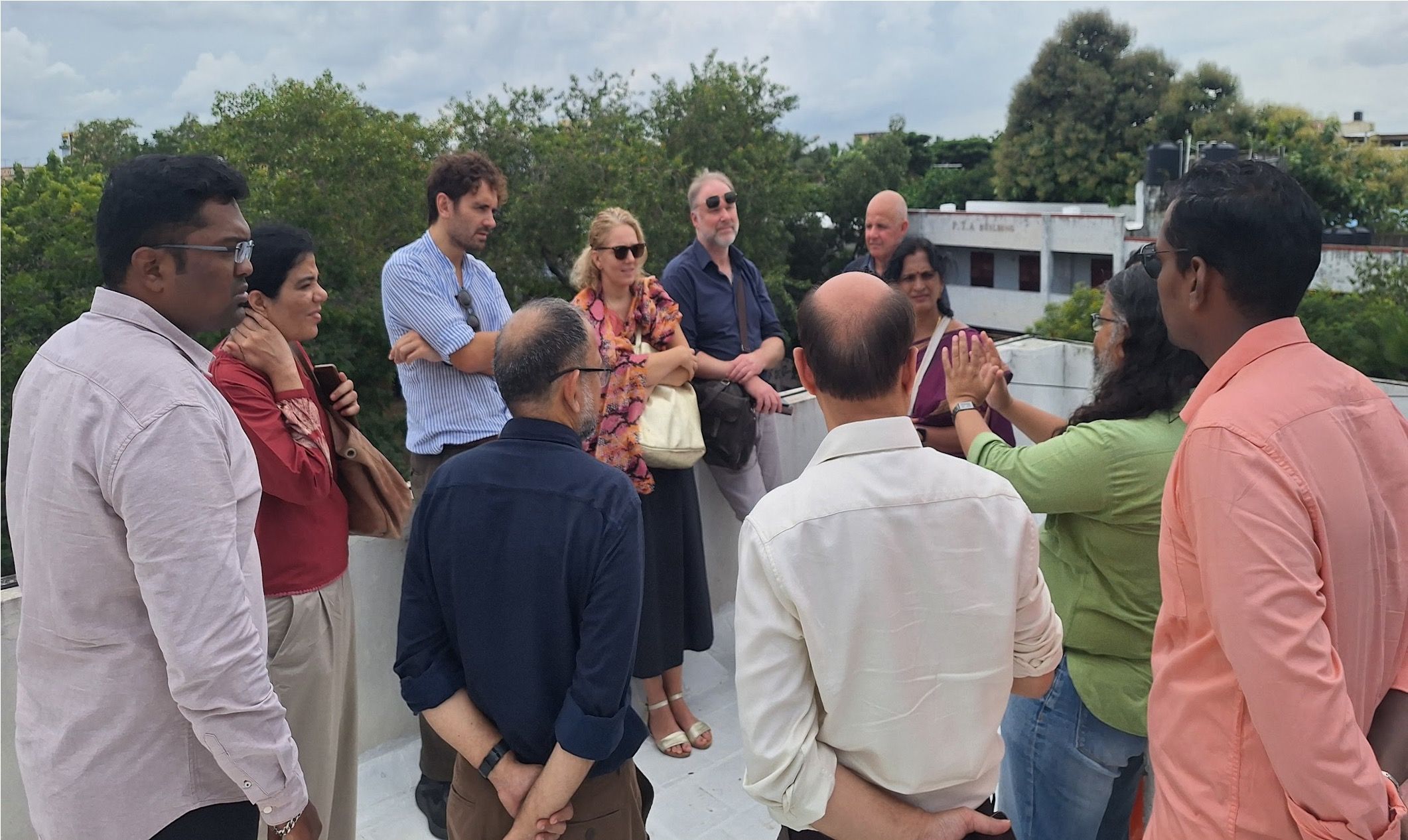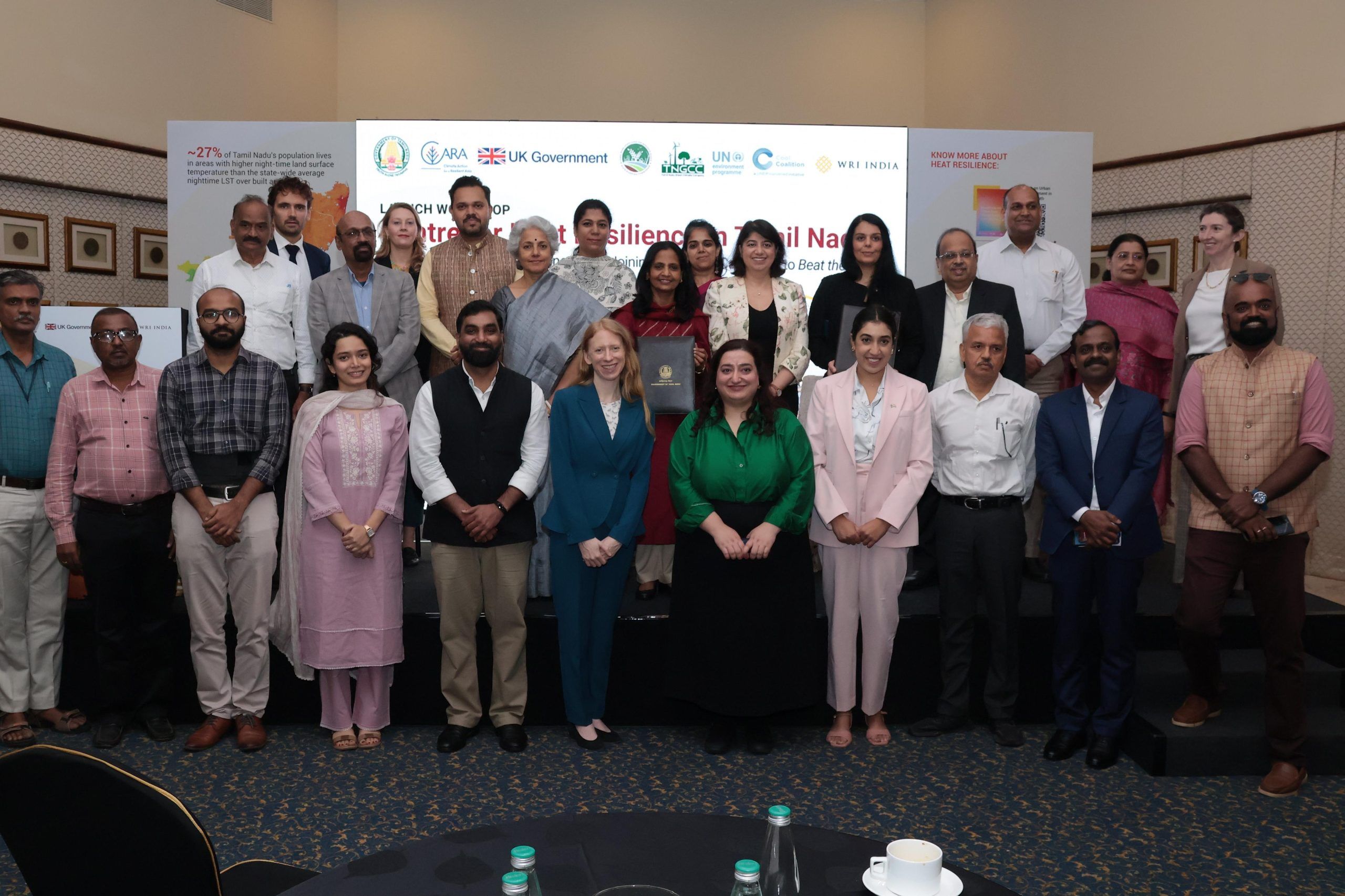Mr Atul Bagai is Head of Country Office (India), United Nations Environment Programme (UNEP). Here, he is in an exclusive conversation with Abhas Mukherjee for TerraGreen magazine.
Ozone depletion is gradual thinning of Earth’s ozone layer in the upper atmosphere caused by the release of chemical compounds from industry and other human activities. Could you elaborate on how dangerous this phenomenon is, keeping in mind our future on planet Earth?
This question was a key concern for the whole world and its political hierarchy in the early 1980s. That was a time when science had informed the world that ozone depletion can lead to drastic health effects—not only for humans, but also for other terrestrial and ocean life. Two of the great health impacts which were found to be increasing as a result of ozone depletion were skin cancer and eye cataracts. That sent an alarm notice, especially in the developed world, as its impact was primarily in the colder climates, and led to the signing of the Vienna Convention and the Montreal Protocol. The projected impacts were huge, but fortunately timely action in the 1980s led to addressing of these issues through the successful Montreal Protocol. In fact, there were studies done which showed that skin cancer and cataract cases have drastically come down in the countries which were supposed to have been impacted, and the hospital costs saved run into hundreds of millions of dollars. So both from the impact perspective and the mitigation perspective, the Montreal Protocol has been a very successful environmental agreement.
Talking about building the capacity of subregional networks in Asia and enabling them to meet the compliance targets under the Montreal Protocol. How was your experience regarding this in your capacity at UNEP?
When you ask countries to bring in new technologies and phase out older technologies, there are many issues which impact the adaptation and implementation, especially in the developing world due to the enormous costs associated with the process. In technology transfer, the main costs are those which are associated with the costs of technology and implementation strategy. In the Montreal Protocol, a very successful innovation was brought in light in the beginning (almost in the early 1990s), of seeing how capacity building can motivate technology transfer, and how it can help in the seamless transfer of technology from the developed world to the developing world. Doing this was important because it would have an impact on not only the socio-economic conditions, but also on the technology handlers and consumers in countries. A very effective approach proposed by Sweden was of forming small networks of stakeholders from the governments, sub-regional or regional wise. The very first network was started in South-East Asia, and it was such a successful approach that within the next 5–6 years there was a network of ozone officers in all the regions of the world. The networking approach has a few big advantages. First, it gives a platform for, and facilitated, multilateral approaches (though bilateral approaches could be cumbersome). Second, it also created a platform to support developing countries, where knowledge and experiences could be shared. Third, it provided a platform for the developed countries (who were the finance and technology providers) to make the technology transfer easier, by building the capacity of the policymakers through the networks. The networks were one of the most successful components—and it was a very cost-effective method. With very little resources, the networks were able to achieve this entire technology transfer that has taken place in the refrigeration and air conditioning industry in the last 25 years.
Was India also a part of this?
South Asia was in fact the last network that was set up—all the other regions had already had their networks running for 10–15 years. The South Asia ozone network was set up in the late 1990s, and India played a leadership role in setting up this network. Over the last 20 years, it has played a very prominent and positive role in disseminating their actions and policies and has assisted the South Asian countries in building their policies for impact on ozone depletion. So yes, India has certainly played a very important role.
Could you talk a little about the recently launched Cool Coalition?
In the developing world, cooling demands are going to increase enormously, and there is an urgent need to bring in energy-efficient technologies. It is a battle that needs to be fought on two fronts—first, on how to meet the increasing cooling demand through new technologies which are sustainable, and the second is on how this increase (that is going to definitely come) can be made more energy efficient. In order to bring governments, businesses, and civil society together to come up with effective solutions, the UNEP-led Cool Coalition was launched. We are looking at promoting and making businesses aware of the best practices that can be adopted in this regard. One of the best practices which is right now being promoted is the development of the India Cooling Action Plan which the Government of India has brought out. India was likely the first country in the world to have come up with a very strategic and holistic National Cooling Action Plan. This is an approach which not only strategizes on how you are approaching the cooling demand of the next 20–30 years, but also focuses on finding solutions which are very energy efficient.This best practice is something through which India can show its leadership by disseminating that to other developing countries. We are hoping that through the Cool Coalition we will be able to support dissemination of India’s learnings and experience.
The India Cooling Action Plan (ICAP) has set targets to reduce cooling and refrigerant demand 20 per cent to 25 per cent and cooling energy requirements by 25 per cent to 40 per cent by 2037–38. Could you talk about which strategies you think would be most suitable in helping achieve this? Are there any low-hanging fruits which would help us achieve our targets more easily?
This is an issue that should be addressed at various levels. Policy is certainly one level where this problem will need to be addressed through adequate measures. For example, strengthening the ECBC (Energy Conservation Building Code) and its implementation would be one level of intervention which would be needed. The second approach—of actually implementing the ICAP—will be in bringing about a technological revolution in terms of bringing innovations and technologies which, are not only indigenous, but also cater to the climatic variations in a country like India. Nature-based solutions are another very big approach that need to be strengthened in the coming years in terms of how they can be found and applied for cooling, especially through urban forestry initiatives whereby creating corridors through urban areas we can reduce cooling demand. Finally, I think there needs to be a big push for behavioural change. That will be a key factor to address the growing cooling demand but in a way that limits our excessive energy use. I’ll give you a small example—in households, offices, or in other complexes, the setting of cooling temperatures at 16 or 17 degrees Celsius is certainly not advisable. Behavioural change—through people getting adapted to 24–25 degrees Celsius—is the kind of policy and approach we need. In fact now, many of the air conditioning manufacturing industries are now putting 24 as a default temperature, instead of 16 and 17, and that change is going to bring in huge benefits.
If you are looking at India, one of the low-hanging fruits is that we are one of the only countries in the world that has experimented with one of the most environment-friendly technologies for air conditioning: Godrej’s manufacturing of R290 air conditioners is actually one of the most sustainable air conditioning systems globally that you can adopt— and they have successfully brought into market almost 1.5 million such air conditioners. There are issues of safety that are often cited in the use of R290, but there is great experience that Godrej now has with manufacturing and maintaining 1.5 million such air conditioners. Another low-hanging fruit is the wide base of manufacturing that we have in India of air conditioning—if that base can adopt such new technologies, India could pave the way for sustainable air conditioning systems. A third low hanging fruit from a technology and design point of view is the very strong architectural expertise we have in this country, who can easily adapt building design to be more effective and efficient buildings that need less cooling. Finally, there is significant traditional knowledge in the building sector that we must tap into; knowledge that has been used for hundreds of years which can be incorporated by architects and designers who are building the new stock of buildings.
India and the whole world are grappling with climate change in various forms such as incidences of heat waves, cold waves, floods and so on. How do you think India can deal with such climate change pressures, especially in the context of the cooling industry?
An important first step India should take is to ratify the Kigali Amendment to the Montreal Protocol. However, that is an international legal process on which India needs to decide. India is taking major steps through a variety of policy, technology, and capacity-building interventions to address CO2 emissions through cooling, and I think all of those can be subsumed under a very big leap which can be taken after they are able to ratify the Kigali Amendment.
Source: TerraGreen, September 2020, Volume 13, Issue 6



